Top 11 Food Safety Inspection Checklists

Ensuring food safety is paramount in the food industry.
Rigorous audits and inspections are essential to maintain the highest standards.
Below are the top 10 food safety inspection checklists that every food and beverage business should be familiar with to uphold impeccable safety and quality measures.
Improve your food safety practices and maintain compliance with these comprehensive audit and inspection checklists. Safeguard your consumers, protect your reputation, and elevate your food business to higher standards of excellence.
Top 11 Food Safety Inspection Checklists:
6. Sanitation Standard Operating Procedures (SSOPs)
7. Food Allergen Control Checklist
9. Temperature Control Checklist
10. Personal Hygiene Checklist
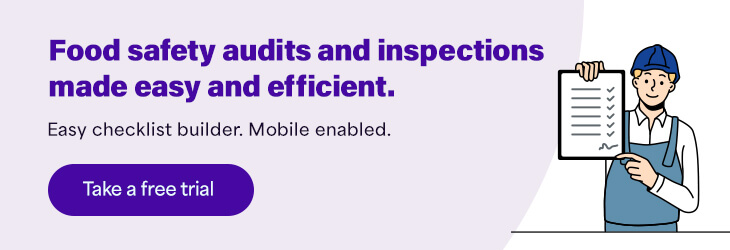
1. FSMA Audits
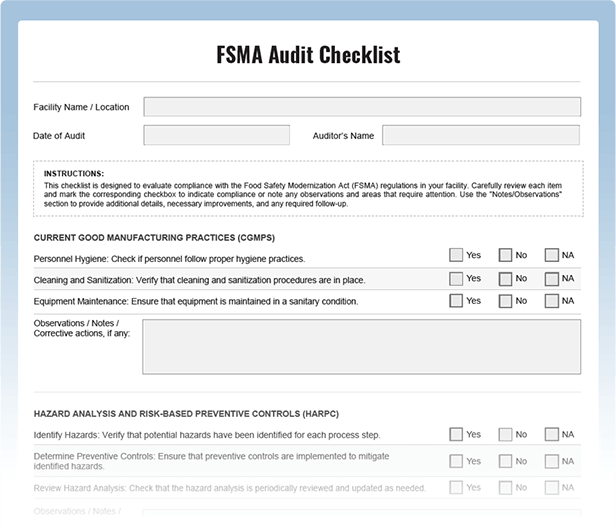
What it covers:
Compliance with the Food Safety Modernization Act (FSMA) regulations, preventive controls, food defense, sanitation, and allergen management.
How it helps::
Stay ahead of food safety regulations, identify potential risks, and protect consumers by adhering to FSMA requirements.
2. HACCP Audits
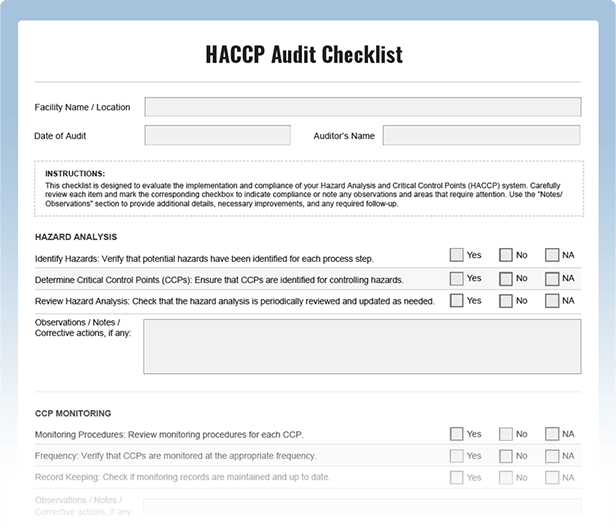
What it covers:
Implementation of Hazard Analysis and Critical Control Points (HACCP) principles to identify, evaluate, and control food safety hazards.
How it helps::
Ensure systematic food safety management, prevent hazards, and maintain consumer confidence with HACCP compliance.
3. ISO 22000 Audits
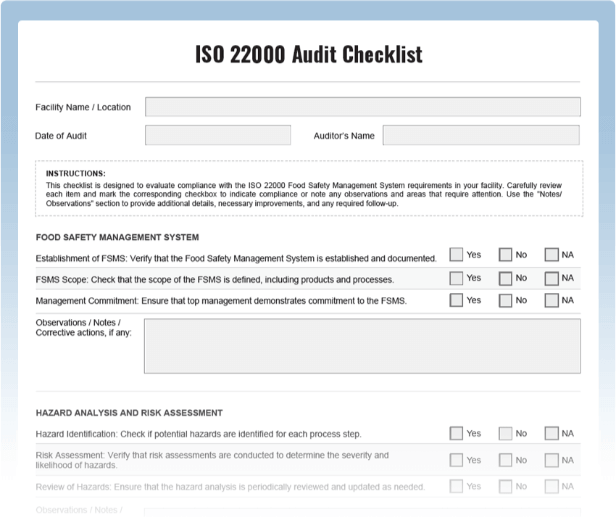
What it covers:
Conformance to the ISO 22000 standard, emphasizing food safety management systems, communication, and continual improvement.
How it helps::
Demonstrate commitment to food safety, enhance supply chain confidence, and meet international standards.
4. GMP Audits
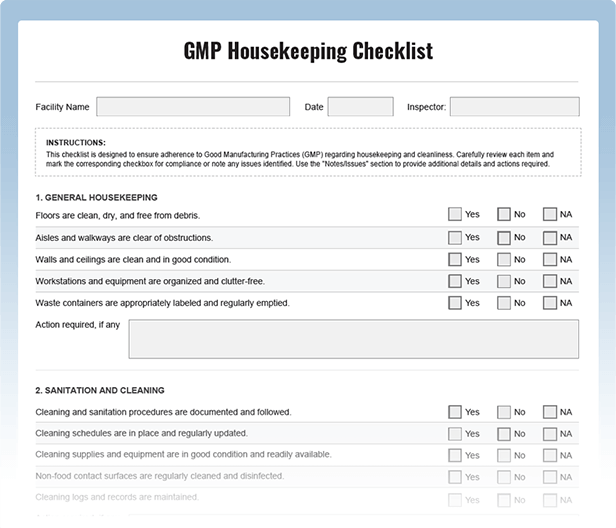
What it covers:
Adherence to Good Manufacturing Practices (GMP) for safe and hygienic food production, storage, and distribution.
How it helps::
Ensure product integrity, minimize contamination risks, and meet regulatory requirements.
5. FSSAI Audits
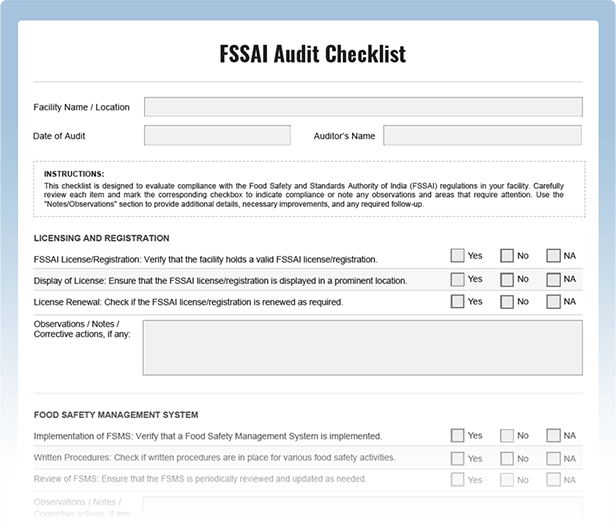
What it covers:
Compliance with the Food Safety and Standards Authority of India (FSSAI) regulations, licensing, hygiene, labeling, and packaging.
How it helps::
Operate legally in the Indian food market, build consumer trust, and avoid penalties.
6. Sanitation Standard Operating Procedures (SSOPs)
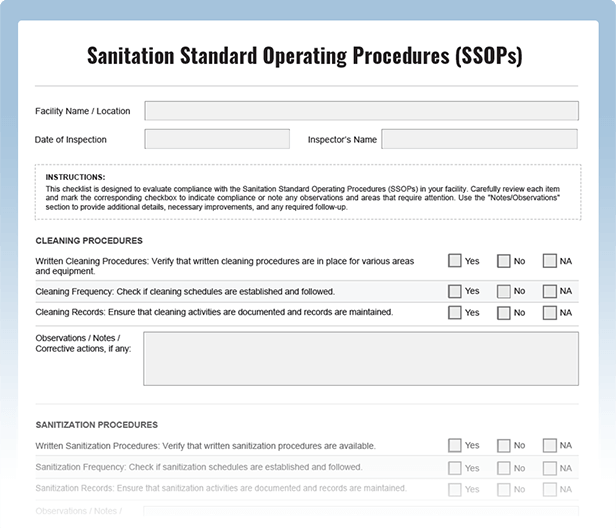
What it covers:
Implementation of SSOPs to maintain sanitary conditions in food processing facilities.
How it helps::
Prevent cross-contamination, ensure hygiene practices, and comply with sanitation regulations.
7. Food Allergen Control Checklist
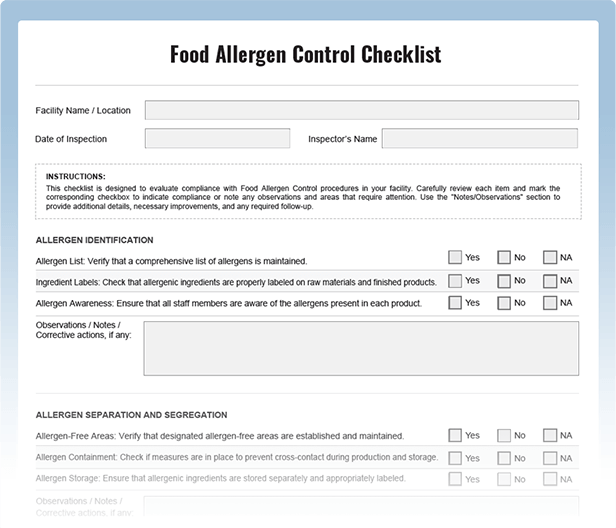
What it covers:
Effective management of food allergens to prevent cross-contact and ensure allergen labeling.
How it helps::
Protect consumers with allergies, reduce allergen-related incidents, and meet labeling requirements.
8. Food Defense Checklist
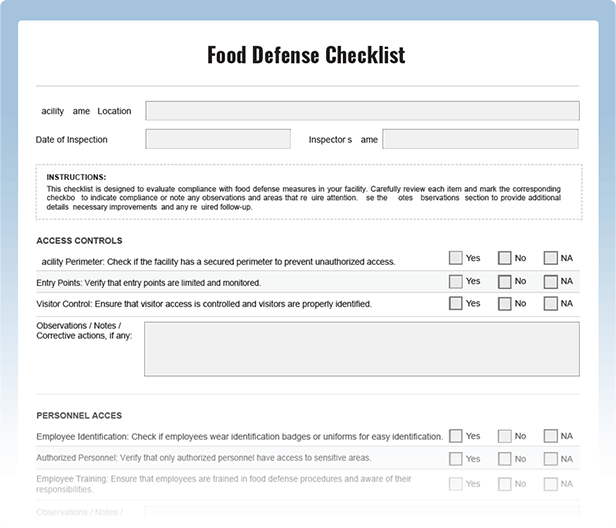
What it covers:
Measures to safeguard food products from intentional contamination and adulteration.
How it helps::
Enhance food security, mitigate potential threats, and protect public health.
9. Temperature Control Checklist
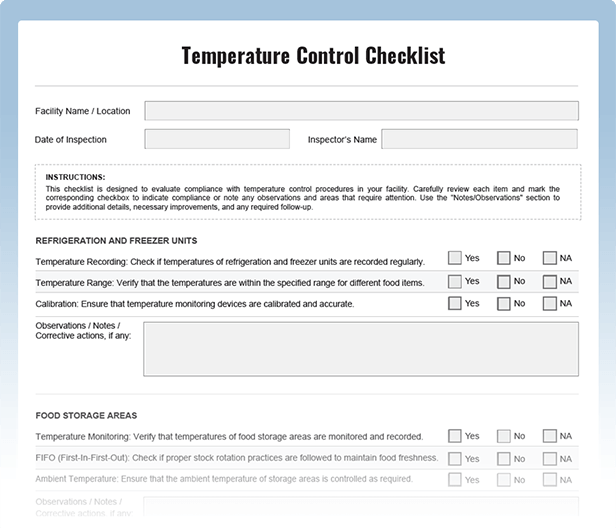
What it covers:
Proper temperature management during food storage, handling, and transportation.
How it helps::
Prevent bacterial growth, maintain food quality, and comply with temperature regulations.
10. Personal Hygiene Checklist
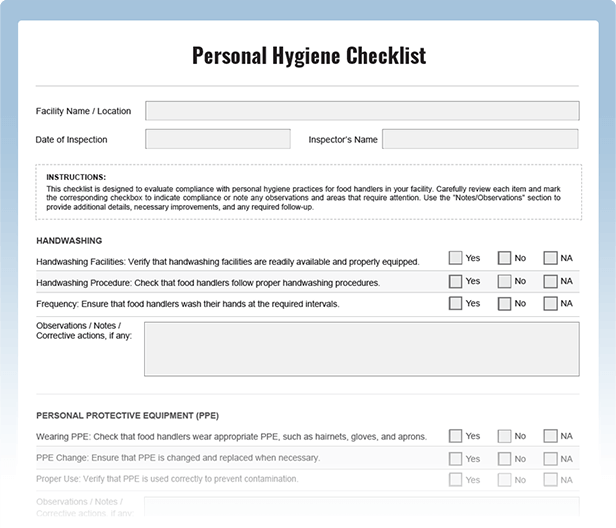
What it covers:
Hygiene practices for food handlers, including handwashing, grooming, and personal protective equipment.
How it helps::
Ensure safe food handling, reduce contamination risks, and maintain a hygienic work environment.
11. Pest Control Checklist
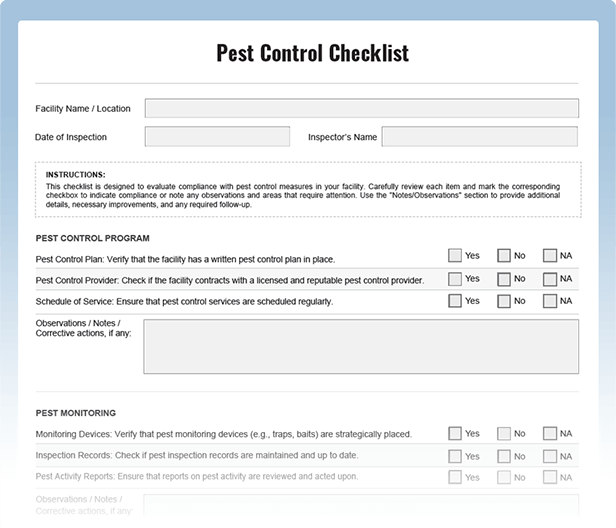
What it covers:
Proactive pest management practices, pest identification, and treatment methods to ensure a pest-free environment.
How it helps::
Prevent food contamination, uphold sanitation standards, and comply with food safety regulations.